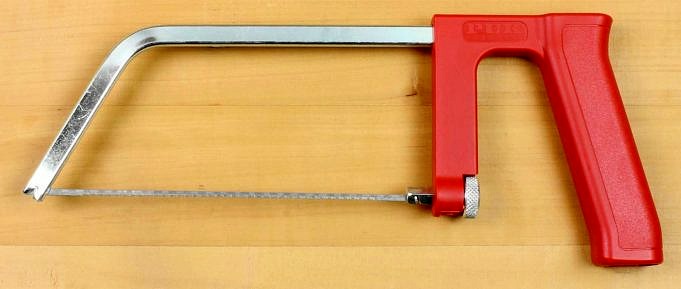When it comes to cutting wood, theres a tool for every job. Which one is best for the job? Here we will compare two of the most common saws used for cutting wood fret saw vs coping saw?
Fret saws are used to cut around the fretboard while coping saws are used to cut around the archtop.
It is crucial to choose the right saw for your job. This guide will help you decide which saw is best for the job and explain the differences between them.
Fret Saw Vs Coping Saw (Compairing)
Fret Saw
The fret saw is perfect for cutting curves and intricate shapes. The flexible, thin blade makes it easy for you to maneuver around corners. It can be difficult to use for beginners, however. It takes a bit of practice to get used to controlling the blade and making accurate cuts.
Coping Saw
The coping saw, on the other hand, is perfect for making straight cuts. It has a thicker blade that makes it sturdier and more stable than the fret saw, making it ideal for beginners. However, the coping saw can’t cut curves as well as the fret saw.
What Is The Difference Between A Fret Saw And A Coping Saw?
You may not be familiar with the terms fret saw or coping saw if you’re new to woodworking. Both of these saws have their own specific purposes, which can make them better or worse choices for a particular job.
The fret saw is a thin, narrow saw that is ideal for cutting intricate designs and curves in wood. The blade is extremely thin and can follow the contours of wood. This makes it an excellent choice for delicate work. The coping saw, which is thicker and more durable, is made for cutting tougher materials. The coping saw has a strong, short blade that is capable of handling tougher cuts.
So, when should you use a fret saw vs coping saw? If you need to make precision cuts in wood, the fret saw is the better choice. If you need to cut through tougher materials, the coping saw is the better choice. It is important to select the right tool for your job. Using the wrong tool can lead to frustration and botched projects. So before you start your next woodworking project, be sure to familiarize yourself with the different types of saws available and choose the one that is best suited for the task at hand.
Fret Saw Vs. Coping Saw:
The fret saw is a small, thin saw that has a very fine blade, which makes it perfect for intricate cutting. The coping saw, a larger saw with a thicker blade is better suited to general-purpose cutting.
- The fret saw is ideal for cutting intricate curves and tight corners. However, the coping saw is more suitable for straight cuts and larger wood pieces.
- The fret saw can be used to make delicate, precision cuts, while the coping saw can be used to make rough cuts.
- Although the fret saw is more expensive than the coping, it’s also more versatile.
Safety Tips
When using any saw, it is important to take precautions to avoid injuries. Make sure you read all instructions before using fret and coping saws. These are some safety tips:
- When using power tools, always wear safety goggles
- You should ensure that your work area is well-lit, and free from obstructions.
- Do not wear loose clothing or jewellery that could get caught in the saw.
- Keep your hands clear of the blade at all times.
Cut curves with care, as the blade could catch on the material and cause an injury.
Which One Should I Use?
That depends on what youre trying to do. If you need to make precise, delicate cuts, go with the fret saw. If you need to do the heavier cutting, go with the coping saw.
Conclusion
A fret saw is a great option for intricate and detailed cuts, while a coping saw is better suited for larger projects. You can find out which saw is best for you project by asking how precise your cut must be and how much stock to take out. Each saw has its own benefits so it comes down to personal preference and the type of project you are working on.



